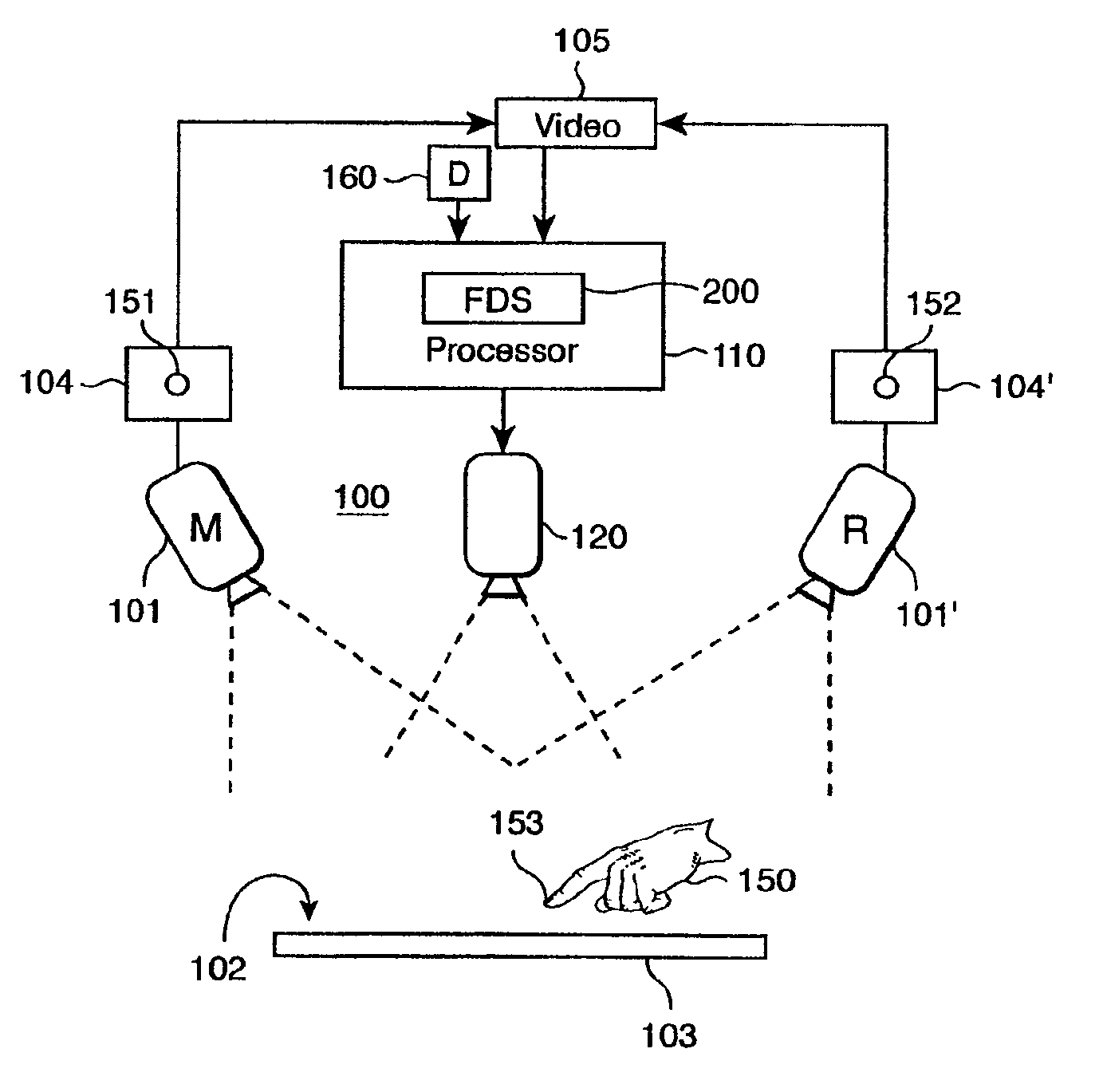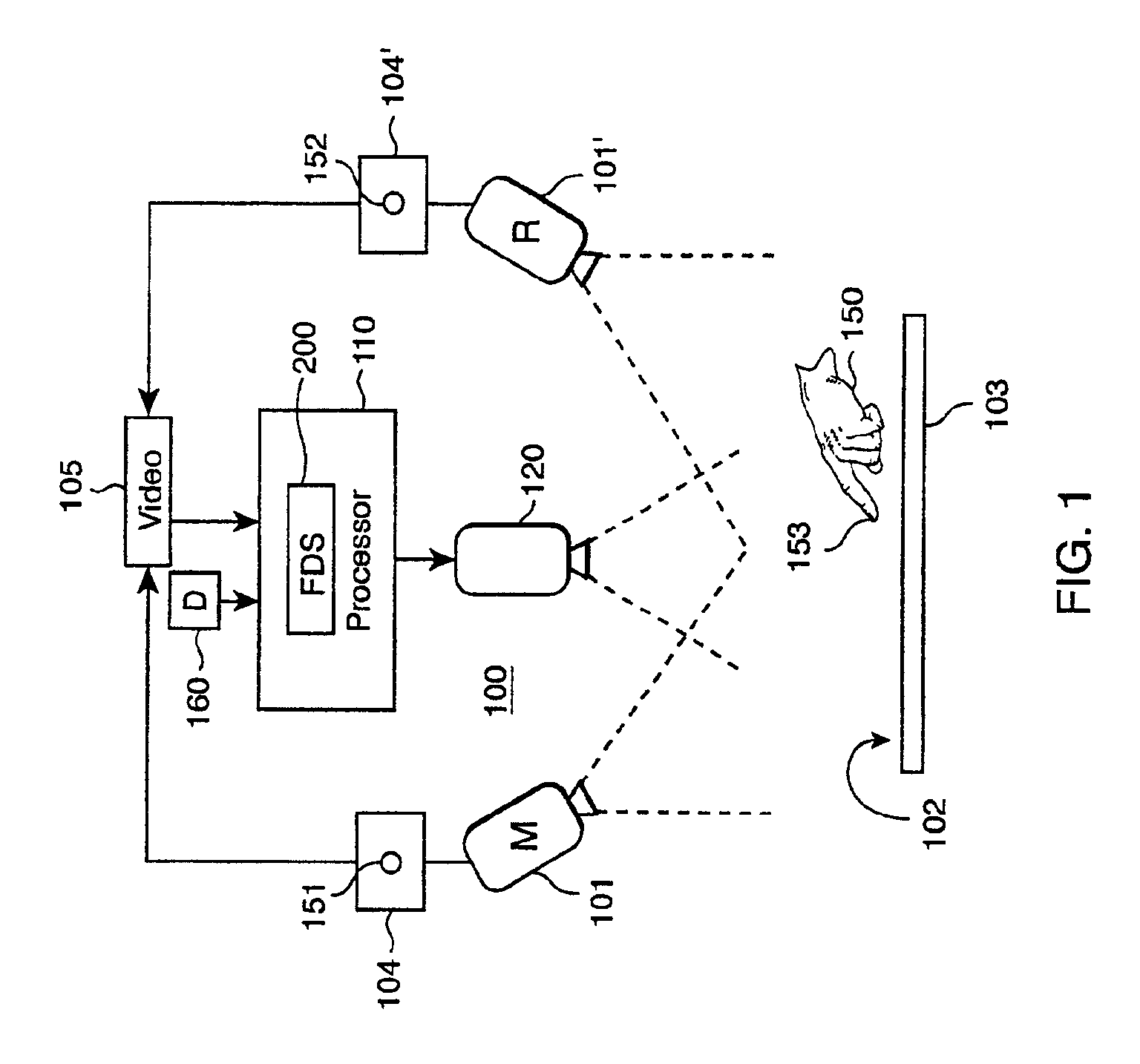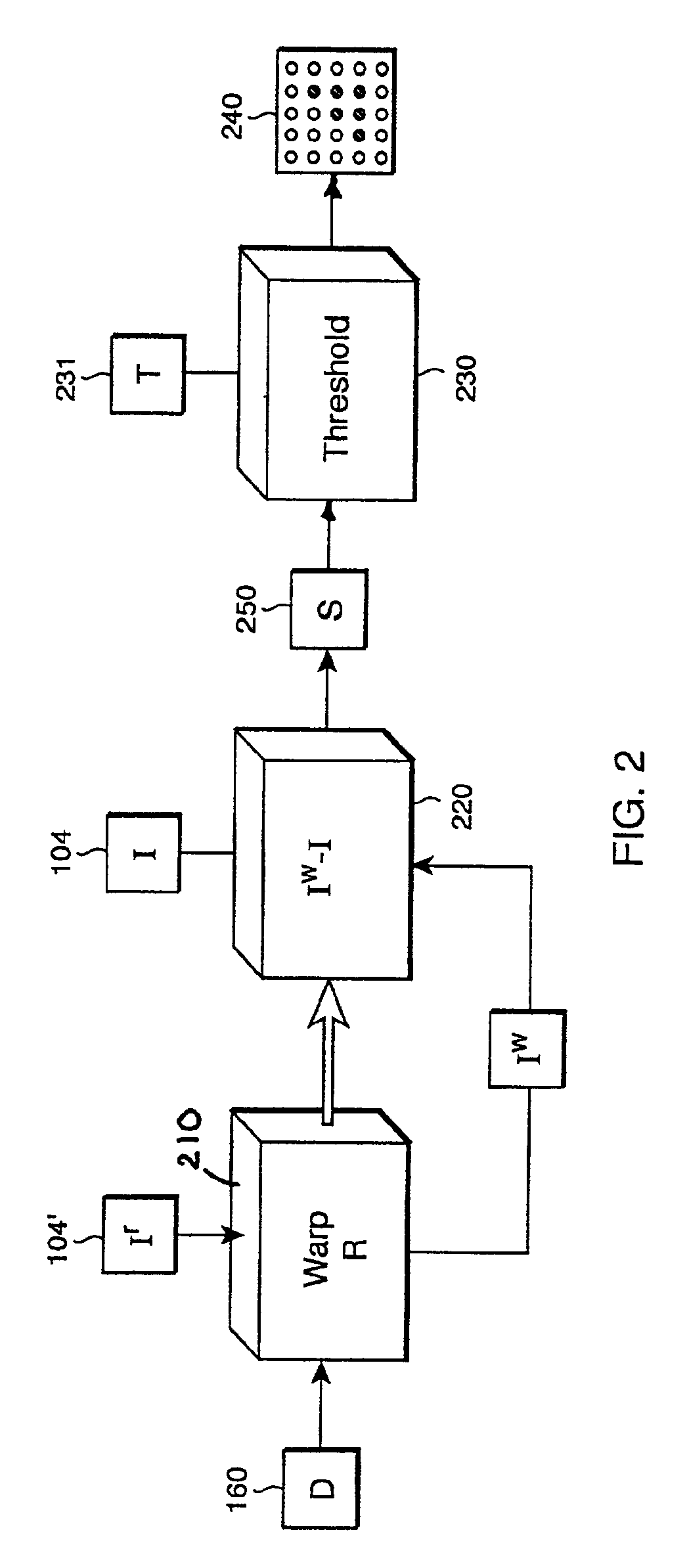Computer vision depth segmentation using virtual surface
- Summary
- Abstract
- Description
- Claims
- Application Information
AI Technical Summary
Benefits of technology
Problems solved by technology
Method used
Image
Examples
Embodiment Construction
System Structure
[0026]FIG. 1 shows a depth segmentation system 100 according to our invention. Our system 100 includes a pair of stereo cameras 101-101′, respectively a main camera M, and a reference camera R, aimed at a scene 102. The scene 102 includes a background object 103, for example, a table top or a game-board, and a foreground object 150, for example, a pointer or a game piece. The cameras 101-101′ acquire pairs of images 104-104′ that form a stereo video 105. The video 105 is analyzed by a processor 110.
[0027]The processor 110 is substantially conventional, including a microprocessor, memory, and I / O interfaces and devices, coupled to each other. The microprocessor executes operating system programs, and application programs implementing a fast depth segmentation (FDS) method 200 according to our invention, as described in greater detail below with reference to FIG. 2. The system 100 can also include a projector 120 to illuminate the scene 102 with dynamically varying ima...
PUM
 Login to View More
Login to View More Abstract
Description
Claims
Application Information
 Login to View More
Login to View More - R&D
- Intellectual Property
- Life Sciences
- Materials
- Tech Scout
- Unparalleled Data Quality
- Higher Quality Content
- 60% Fewer Hallucinations
Browse by: Latest US Patents, China's latest patents, Technical Efficacy Thesaurus, Application Domain, Technology Topic, Popular Technical Reports.
© 2025 PatSnap. All rights reserved.Legal|Privacy policy|Modern Slavery Act Transparency Statement|Sitemap|About US| Contact US: help@patsnap.com



